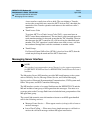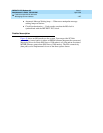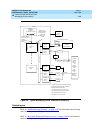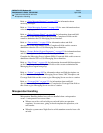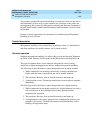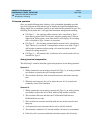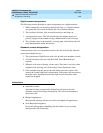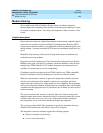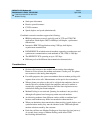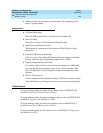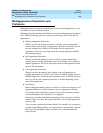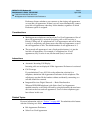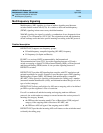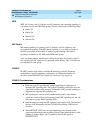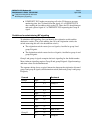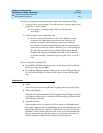
DEFINITY ECS Release 8.2
Administrator’s Guide
555-233-506
Issue 1
April 2000
Features and technical reference
1434Modem Pooling
20
■ Send space disconnect
■ Receive space disconnect
■ CF-CB common
■ Speed, duplex, and synch (administered)
Combined-conversion modems support the following:
■ IBM bisynchronous protocols typically used in 3270 and 2780/3780
applications. Both require 2400 or 4800 bps, half-duplex, synchronous
transmission.
■ Interactive IBM-TSO applications using 1200 bps, half-duplex,
asynchronous transmissions
■ DATAPHONE II switched-network modems supporting asynchronous and
synchronous communications, and autobaud at 300, 1200, or 2400 bps
■ The DEFINITY ECS operating at up to 19.2 kbps
■ Different pools with different data-transmission characteristics
Considerations
■ On data calls between a data module and an analog-data endpoint,
Return-to-Voice releases the modem and returns it to the pool. The phone
user connects to the analog-data endpoint.
■ For traffic purposes, the system accumulates data on modem-pooling calls
separate from voice calls. Measurements on the pools also accumulate.
■ When a phone user places a data call to a digital-data endpoint, does not
transfer the call to another digital-data endpoint, and uses a modem or
acoustically-coupled modem, the user dials the data-origination access
code before dialing the distant endpoint.
■ Modem Pooling is not restricted. Queuing for modems is not provided,
although calls queued on a hunt group retain reserved modems.
■ Avoid mixing modems from different vendors within a combined pool
because such modems may differ in transmission characteristics.
■ When you administer data-transmission characteristics (speed, duplex, and
synchronization mode), they must be identical to the TDM and optional
modem selections made by the customer.
■ Each data call that uses Modem Pooling uses four time slots (not just two).
As a result, heavy usage of Modem Pooling could affect TDM
bus-blocking characteristics.



